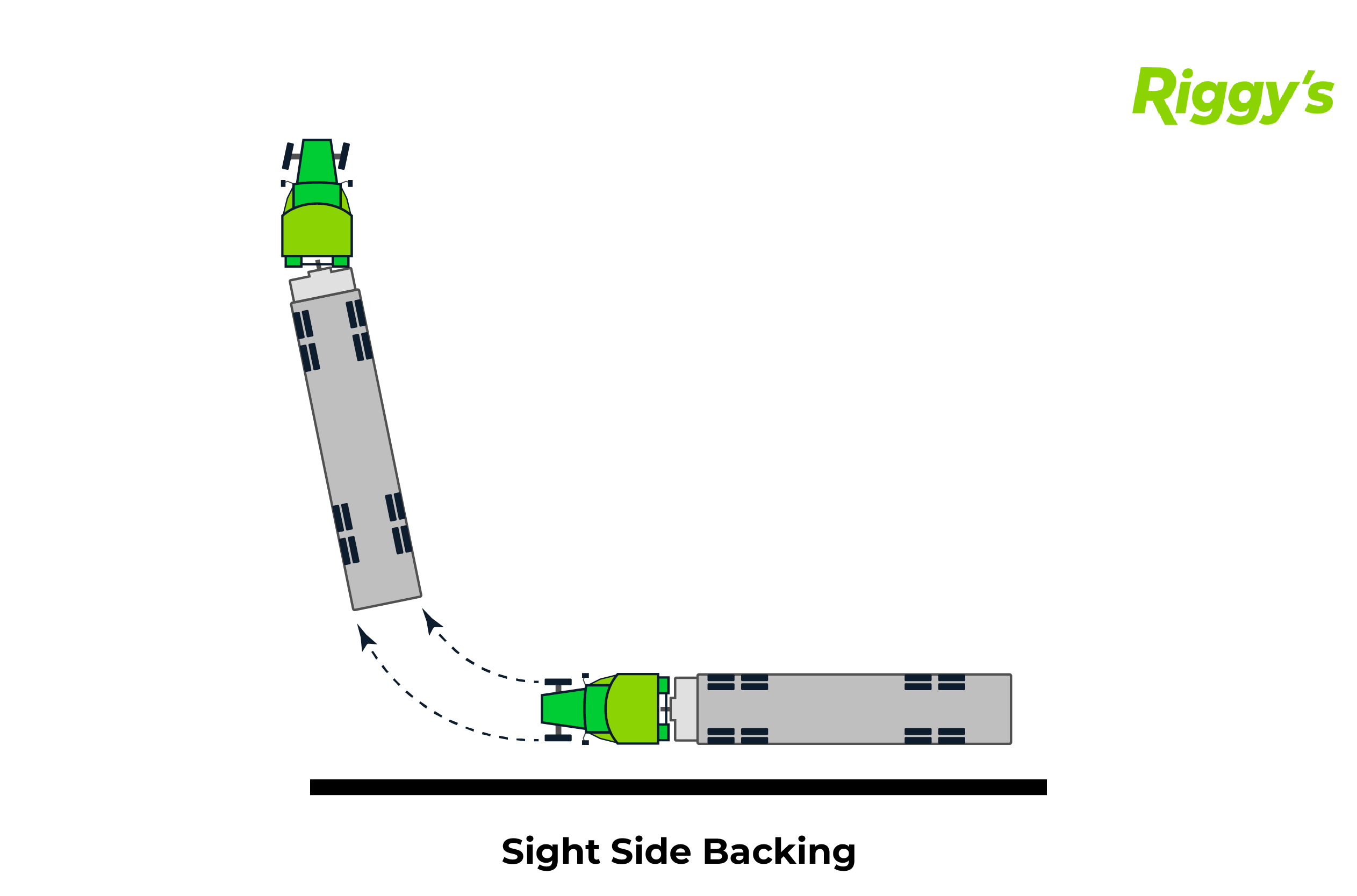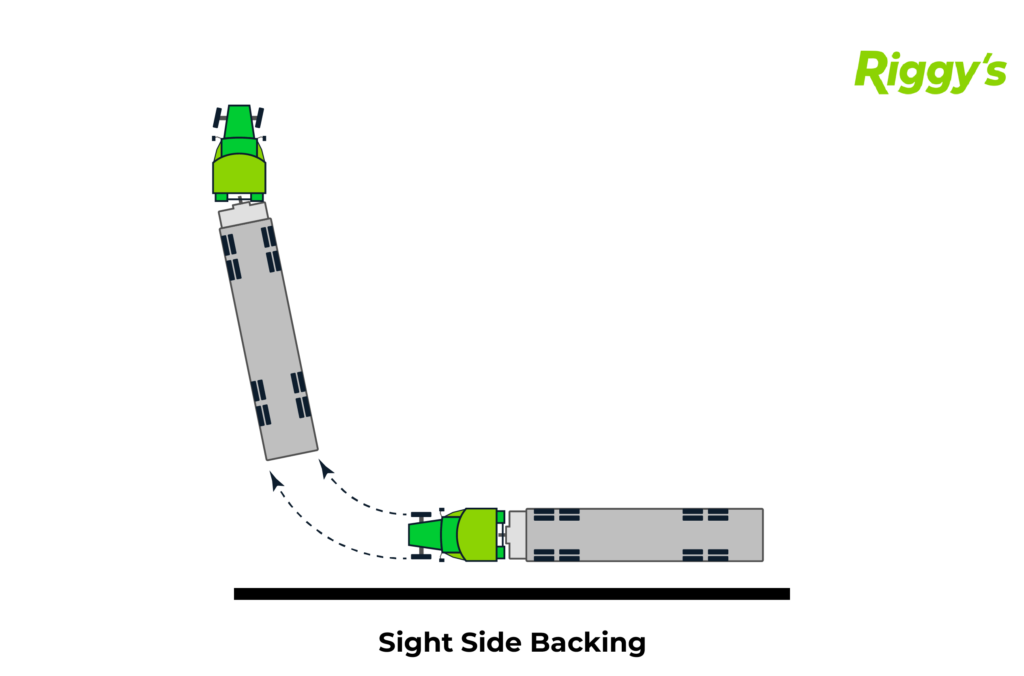
Blind side backing is when a driver backs toward the vehicle’s right side with limited visibility, only seeing through the rearview mirrors. It requires more patience and setup compared to sight side backing.
Blind side backing poses challenges due to reduced visibility on the right side of the vehicle, making it a more intricate maneuver. Though essential in certain situations, blind side backing should be approached cautiously to ensure safety and proper execution.
Understanding the differences between blind side and sight side backing techniques is crucial for commercial drivers to enhance their backing skills and prevent accidents. We will delve into the specifics of blind side backing, its significance, challenges, and safety measures for effective execution.

Credit: riggys.com
Navigate As You Want: [show]
What Is Blind Side Backing
Blind side backing involves backing toward the right side of the vehicle, with limited visibility only in the truck’s rearview mirrors. It requires patience and time to set up and should be avoided if possible due to its complexity and lack of visibility. In contrast, sight-side backing refers to backing towards the left side of the vehicle, allowing the driver to see the trailer path. Blind side backing is more involved than sight-side backing, and it poses challenges that require careful assessment and consideration.
As a driver, it’s important to understand the differences between these two backing techniques and to prioritize safety at all times. By being mindful of the challenges and complexities associated with blind side backing, drivers can make informed decisions and take appropriate precautions to minimize risks and ensure safe maneuvering in challenging situations.

Credit: www.slideshare.net
Tips And Techniques For Blind Side Backing
Blind side backing refers to backing towards the right side of the vehicle, where the driver’s visibility is limited to the rearview mirrors. It requires more patience and time to set up compared to sight side backing.
| Setting Up for Blind Side Backing | Blind side backing requires patience and setting up properly is crucial. |
|---|---|
| Procedure for Blind Side Backing | When blind side backing, move slowly, use mirrors, and adjust as needed. |
| Example of Blind Side Backing | Watching demonstrations can help understand the intricacies of blind side backing. |
| Primary Backing Techniques | Develop mastery over primary backing techniques for smoother maneuvers. |
| Assessing the Situation | Prioritize safety by constantly assessing the surroundings while blind side backing. |
Dangers And Challenges Of Blind Side Backing
Blind Side Backing refers to the act of backing towards the right side of a vehicle, where the driver’s visibility is limited to the truck’s rearview mirrors. It requires more patience and time to set up compared to sight side backing, as drivers have limited visibility.
| Blind side backing involves limited visibility and requires more time to set up. |
| It poses challenges such as jackknifing and the need for increased patience. |
| Avoiding blind side backing whenever possible is recommended due to its complexities. |

Credit: m.youtube.com
Benefits Of Driver Side Backing
Blind side backing refers to the act of backing towards the right side of the vehicle, where the driver has limited visibility and can only see where they are going in the truck’s rearview mirrors. It is more involved than sight side backing and requires patience and time to set up. The benefits of driver side backing include improved rear visibility, added safety, and preventing accidents. This type of backing is particularly important for commercial motor vehicle requirements.
Frequently Asked Questions On What Is Blind Side Backing
What Is A Blindside Back?
Blindside backing means reversing towards the right side of the vehicle with limited visibility in the rearview mirrors. It requires more patience and setup time than sight side backing. It’s more challenging due to limited visibility and should be avoided if possible.
What Is The Difference Between Sight Side Backing And Blind Side Backing?
Blind side backing is when you reverse towards the right side with limited visibility. Contrastingly, sight side backing is towards the left, allowing for clearer trailer path visibility. Blind side backing is riskier and requires more precision and time to execute safely.
What Is A Blind Side Reverse?
A blind side reverse is when a driver backs towards the vehicle’s right side with limited visibility, making it more complex than sight side backing.
What Does Driver Side Backing Mean?
Driver side backing refers to reversing towards the left side of the vehicle, allowing the driver to monitor the rear by looking out the side window for added safety. This method is preferred over blind side backing due to better visibility.
Conclusion
Blind side backing refers to the maneuver of backing toward the right side of the vehicle, where limited visibility adds complexity. It demands patience and careful setup. Drivers should exercise caution and avoid blind side backing whenever possible due to its heightened risks and challenges.
Safe practices ensure a smoother driving experience.




